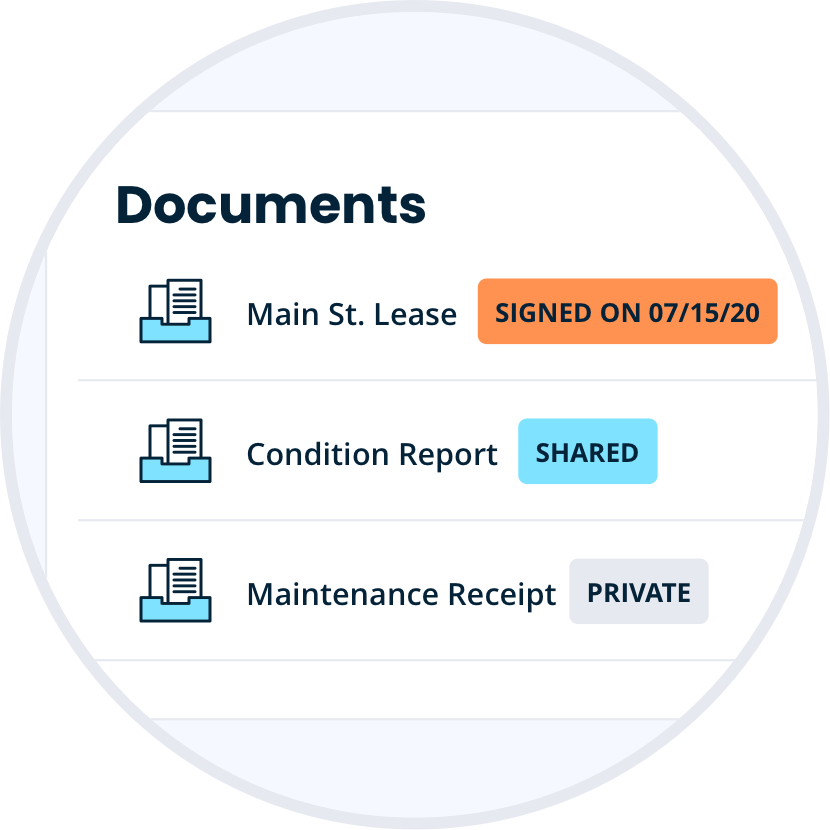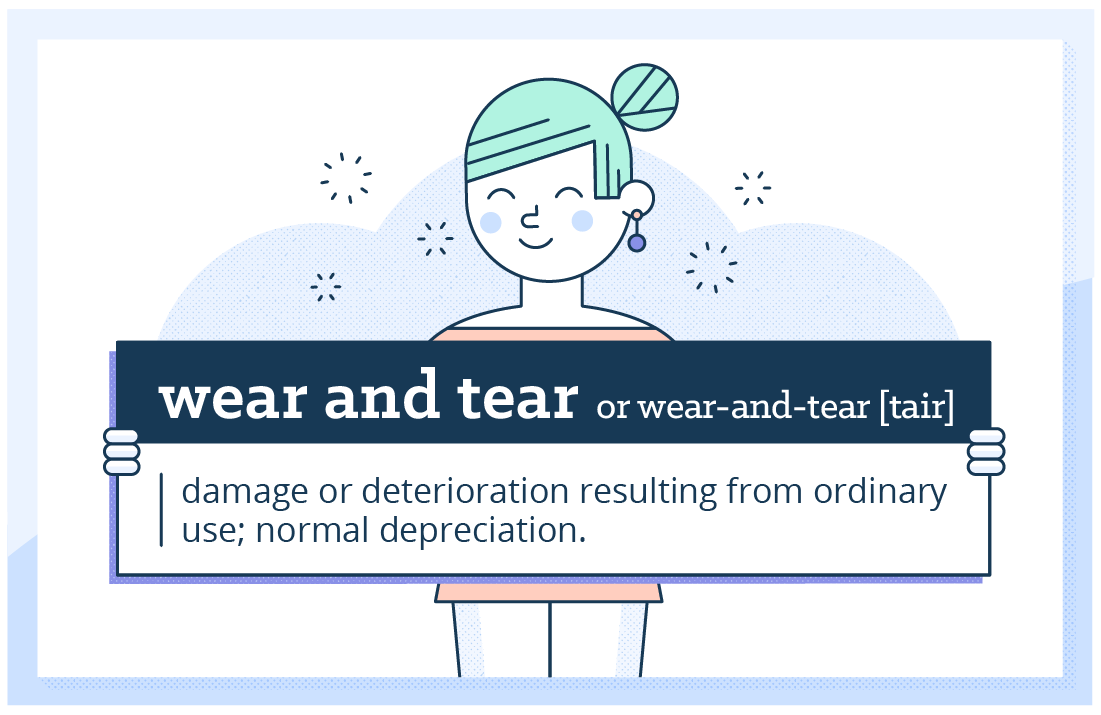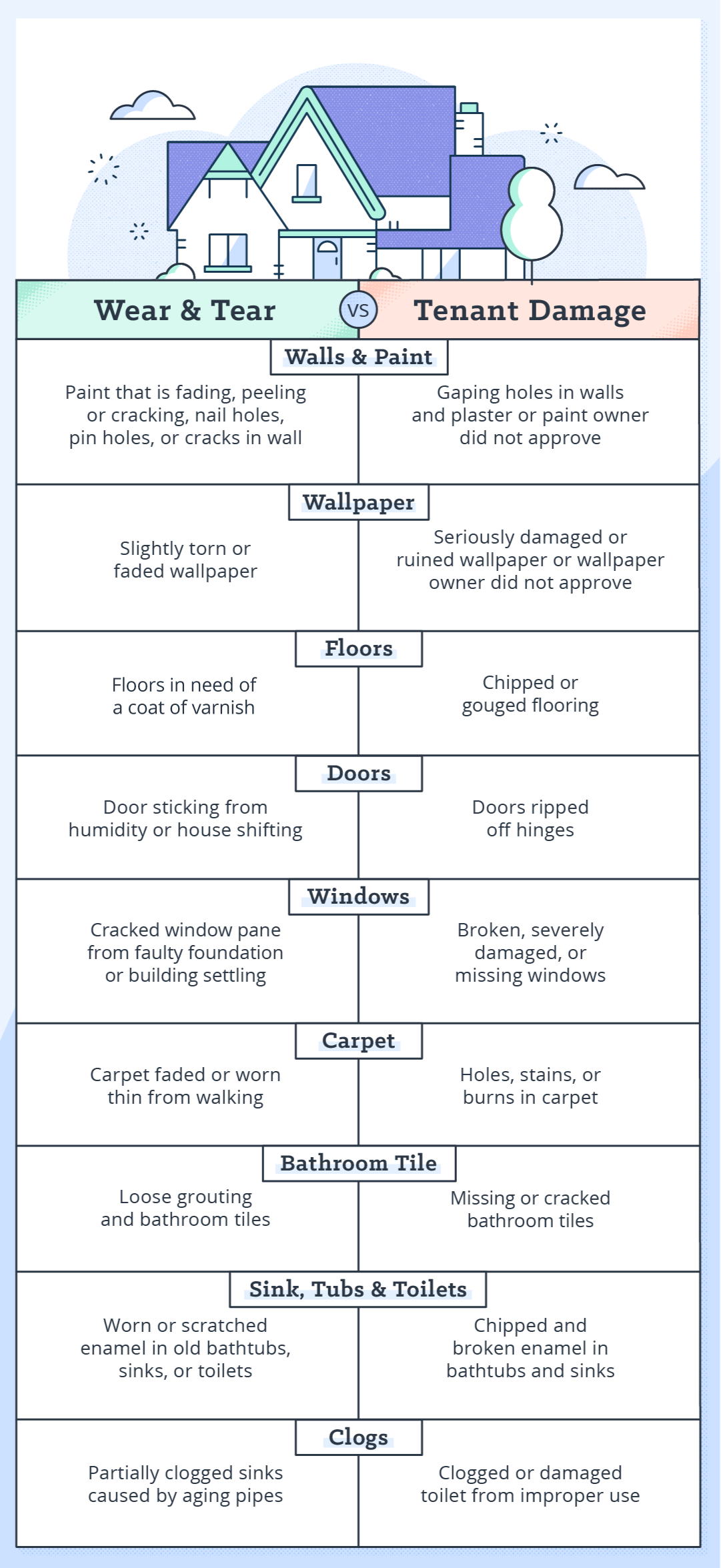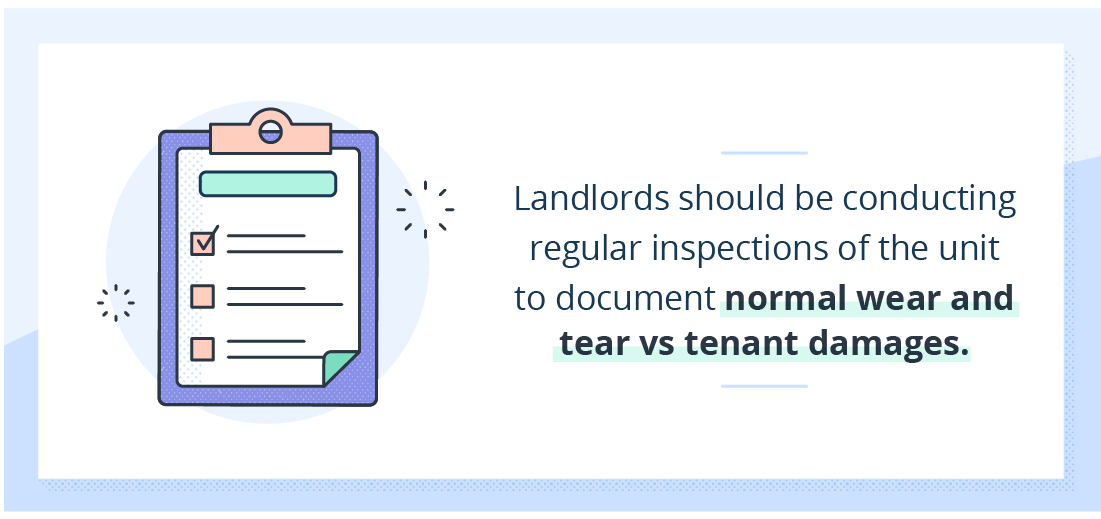“Normal wear and tear” is a term that gets tossed around frequently in the apartment rental world, but there is a lot of confusion around what it actually means and how it applies to landlords. This is because it’s a notoriously slippery concept to pin down, and the legal definition actually varies state-by-state. In order to clear things up, we go over the wear and tear definition along with specific examples for what is considered normal wear and tear.
In addition to reading this article, be sure to check out your state-specific landlord-tenant laws for more information about normal wear and tear definitions in your area.

Need More Landlord Forms?
Download our essential landlord forms pack for just $199 in your TurboTenant account. From welcome letters to property inspection forms, we have you covered.
What is Normal Wear and Tear?
Wear and tear is defined as “damage or deterioration resulting from ordinary use; normal depreciation” according to Dictionary.com. In simpler terms, it’s the damage that happens from everyday use over time. Examples of this would include car tires that need to be replaced every few years or shirts that get worn out after years of laundry cycles.

So, why is this relevant to landlords? It’s because, by law, landlords cannot hold tenants responsible for damages from what is considered normal wear and tear. Landlords are not able to withhold part or all of a tenant’s security deposit to repair items in the unit that have simply worn down with time. To be classified as normal wear and tear, the damage should be correlated to normal, everyday use. To be classified beyond normal wear and tear, the damage must be caused by irresponsible actions by the tenants, whether intentional or unintentional.
Normal Wear and Tear Examples vs Tenant Damages
Though this may seem like a simple enough concept, actually differentiating between normal wear and tear and tenant damages in real situations can be a bit trickier. The type of damage also informs how long a landlord has to fix something; you can learn more about that in our article here. In order to help you spot the difference, we’ve outlined several common examples.
- Carpets: Carpets naturally get worn, thin, and dirty as many people walk over them every day. If you notice that the carpets are looking ragged enough to be replaced, that would be your responsibility as a landlord to pay for the replacement. However, if you install brand new carpets and they’re completely stained and gross by the end of the tenancy, then you would have a good case for taking funds from the tenant’s security deposit to clean them.
- Paint: The same holds true with painted walls inside the unit. The paint will naturally chip over the years and may get discolored due to steam from cooking. It’s your job to maintain the unit in good condition, and re-painting every couple of years is usually a part of this. Paint could only be charged as tenant damages if there are significant scratches and chips due to deliberate damage.
- Appliances: Once again, appliances have a limited lifespan, and items like the fridge, dishwasher, and stove will likely need to be replaced after a number of years. If the stove stops lighting one day and can’t be fixed, you as the landlord will have to provide a new one in order to keep the unit in fit living condition. If the tenant moves out and all the shelves in the refrigerator are smashed, then you can safely assume this was tenant-inflicted damage and charge them to replace the appliance.
Below are several more examples of normal wear and tear vs tenant damages:

Maintaining Wear and Tear Paperwork
If landlords do find themselves in the situation of needing to deduct from the security deposit to pay for tenant damages, they should be sure to specifically document each damage for the tenant to review. Ultimately, you need to ensure you are following all local laws in regard to a security deposit before you take any drastic measures. If a tenant has damaged your property and you need to retain some of their deposit, it is important that you create an itemized and detailed list demonstrating why you kept the amount you did.
This security deposit settlement form should start with the total amount you received from the tenant, with every deduction listed below along with the final balance owed to the tenant. Items on the list might include the following:
- Pet damages
- Major repairs
- Extra cleaning costs
- Painting
- Missing fixtures or appliances
- Damaged fixtures or appliances
- Unpaid rent

In order to make sure both the tenant and landlord are on the same page about damages owed that can’t be attributed to normal wear and tear, landlords should always conduct a move-out inspection with the tenant. During the inspection, landlords can point out all the damages that will be deducted so the tenant is aware and has time to fix them if they can.
In order to really cover your bases, landlords should also be doing periodic inspections of the unit every 3-6 months. This way you can catch any critical repairs that the tenant may not be reporting, as well as document the overall condition of the unit to determine whether damages can be attributed to normal wear and tear or if they were caused by the tenant.
Take a look at our printable rental inspection checklists for move-out, move-in, and periodic inspection forms.
In addition to properly documenting damages and repairs, landlords should also do their best to prevent any excessive damage to their rental units by screening tenants for any red flags in their renting history. This can be done as part of the rental application process. Visit TurboTenant for more landlord tips, tricks, and advice for everyday situations.







